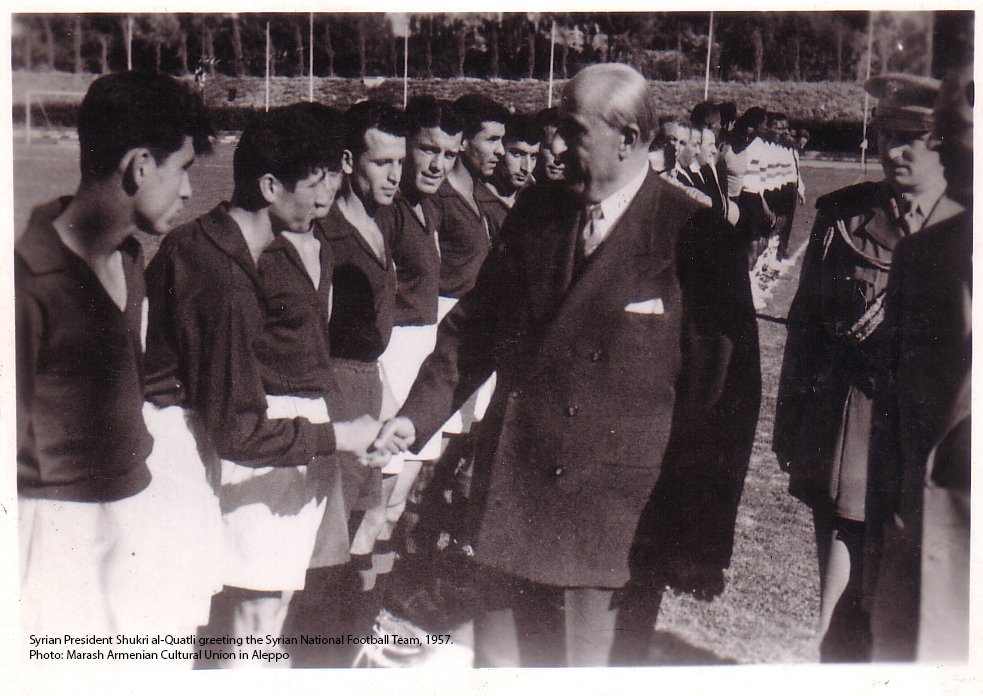Our descent was fast and sudden when it came to both war and football. The 2010-2011 season was called off in its entirety. Civil war leaves little untouched. You more or less have to take a side or you leave. Footballers did all those things, leaving diminished teams struggling with their third string players. Firas al-Khatib, one of the best players ever in Syria, declined to play for the national team again and left the country in 2012, first for Iraq, then China and now Kuwait. Players for al-Wathbah, the Homs club, were killed in a mortar attack outside their hotel in Damascus while getting ready for training.
When war blazed across the country in 2011, Syrian soccer was on the verge of its greatest triumph ever – a possible spot at the London Olympics.[i] At that level, it is youth teams that compete and Syria’s Under 23s looked promising. Among its best players was the goalkeeper, Abdelbasset Saroot, who played for the Homs team al-Karameh. In April 2011, he joined the demonstrations in Homs, prompting the government to accuse him of being a Salafi extremist and offering a two million Syrian pounds reward for his arrest. The National Sports Association issued a decree banning him from playing for life. In July 2011, a video appeared on Youtube of him standing before a Syrian national flag. “I am now wanted by the security agencies which are trying to arrest me. I declare with sound mind and of my own volition that we, the free people of Syria, will not back down until our own and only demand is met: the toppling of the regime. I hold the Syrian regime responsible for anything that happens to me.”
By the time of the last qualifying rounds in early 2012, FIFA had decided it was too dangerous to play in Syria so the national team was abroad, surrounded by bullying minders and missing their talented and charismatic goalie. The team beat the Asian Champions Japan 2-1. They then wiped out Malaysia 3-0 in an empty stadium in Jordan. Japan fought back by beating Bahrain, meaning that there would be no automatic qualification for Syria. The next stop was Vietnam and two more games.
Meanwhile Saroot had been forced underground. Assassination attempts by the regime had killed two brothers and best friend. After the first attempt, he had appeared in another Youtube video, seriously injured but defiant. Known also for his voice, he appeared in front of enormous crowds in Homs to sing revolutionary songs.[ii] Young, handsome, articulate and possessed of a defiant charisma, he emerged as an icon of the revolution, carried overhead by adoring crowds. The documentary “The Return to Homs” by the filmmaker Talal Derki portrayed him as a young symbol of a leaderless revolution who only resorted to violence when nonviolent resistance seemed futile.
Saroot’s trajectory mirrors that of so many young Syrians. The government’s murder of his siblings and friends pushing him to a probably reluctant association with violent extremists. He was said to have joined Jabhet An-Nusra, the now renamed group that was once allied with Al Qaeda. He then was said to have moved further along the path of extremism, signing up for ISIS, although it is unclear how much he supported them. Apparently disgusted by their violence, he is still in Homs but part of a less religious, more nationalist group, still protesting the regime during rare moments of peace. With soccer, singing and an easy manner with fans, he never would have been a good fit with ISIS.
***
To read the full story, please download the PDF here
 The Aleppo Project
The Aleppo Project
Join the conversation
You must be logged in to post a comment.